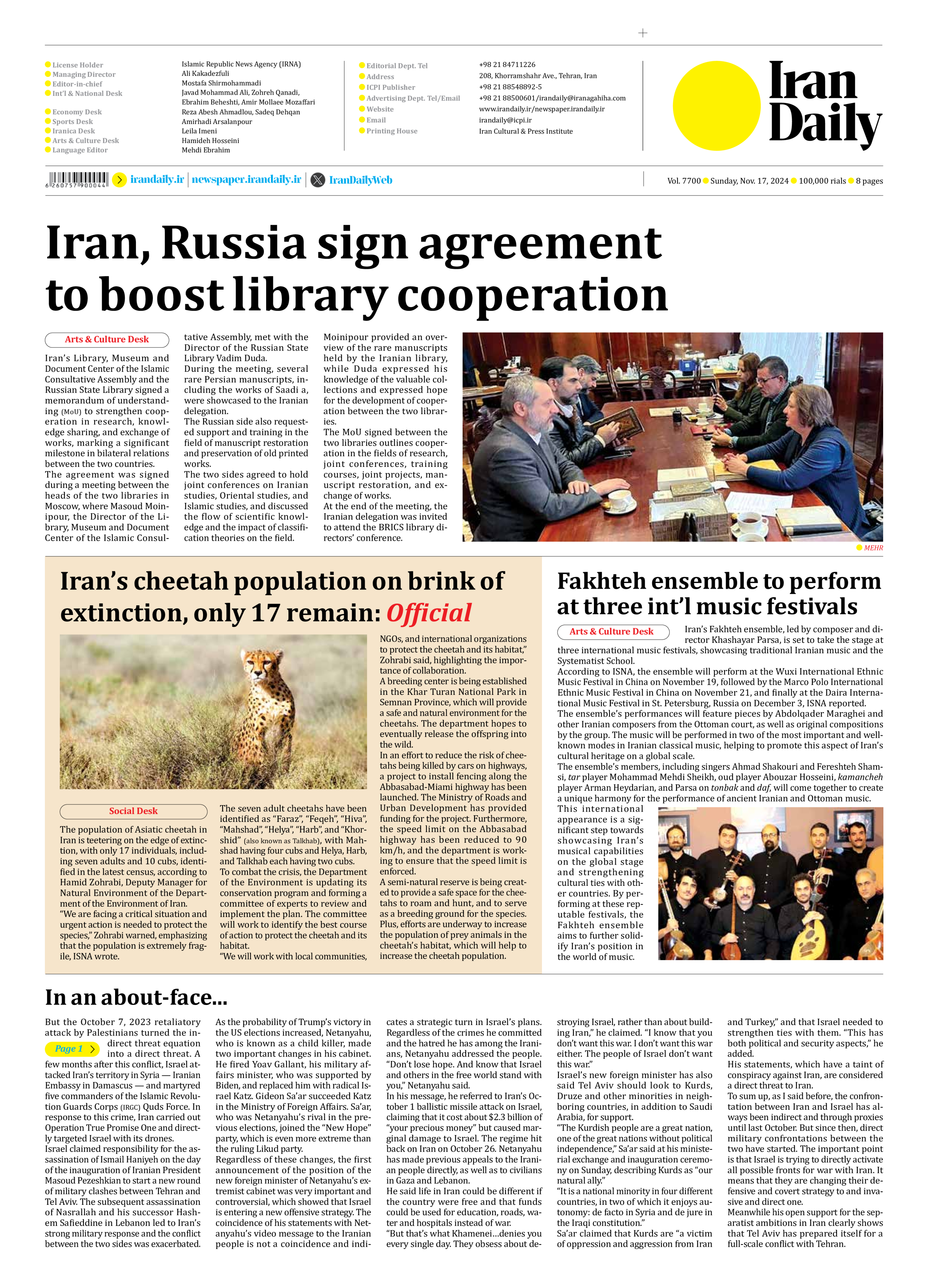
Iran’s cheetah population on brink of extinction, only 17 remain: Official
The population of Asiatic cheetah in Iran is teetering on the edge of extinction, with only 17 individuals, including seven adults and 10 cubs, identified in the latest census, according to Hamid Zohrabi, Deputy Manager for Natural Environment of the Department of the Environment of Iran.
“We are facing a critical situation and urgent action is needed to protect the species,” Zohrabi warned, emphasizing that the population is extremely fragile, ISNA wrote.
The seven adult cheetahs have been identified as “Faraz”, “Feqeh”, “Hiva”, “Mahshad”, “Helya”, “Harb”, and “Khorshid” (also known as Talkhab), with Mahshad having four cubs and Helya, Harb, and Talkhab each having two cubs.
To combat the crisis, the Department of the Environment is updating its conservation program and forming a committee of experts to review and implement the plan. The committee will work to identify the best course of action to protect the cheetah and its habitat.
“We will work with local communities, NGOs, and international organizations to protect the cheetah and its habitat,” Zohrabi said, highlighting the importance of collaboration.
A breeding center is being established in the Khar Turan National Park in Semnan Province, which will provide a safe and natural environment for the cheetahs. The department hopes to eventually release the offspring into the wild.
In an effort to reduce the risk of cheetahs being killed by cars on highways, a project to install fencing along the Abbasabad-Miami highway has been launched. The Ministry of Roads and Urban Development has provided funding for the project. Furthermore, the speed limit on the Abbasabad highway has been reduced to 90 km/h, and the department is working to ensure that the speed limit is enforced.
A semi-natural reserve is being created to provide a safe space for the cheetahs to roam and hunt, and to serve as a breeding ground for the species. Plus, efforts are underway to increase the population of prey animals in the cheetah’s habitat, which will help to increase the cheetah population.







